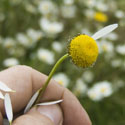
ELLEN L. DONALDSON, M.H.R.
PRIVATE PRACTICE
TEST YOUR KNOWLEDGE
Marijuana Quiz
(Must get 20 correct to pass)
1. Marijuana has a major active chemical called
a. delta cannibinoid
b. androus delta 9
c. delta-9-tetrahydrocannabinol
d. none of the above
2. When a nursing mother smokes marijuana, some of the THC passes to the baby in her breast milk and can impair the infant's motor development. True___ False___
3. Marijuana is frequently combined with other drugs, often without the user being aware, such as crack cocaine, PCP, formaldehyde and codeine cough syrup.
True ___ False___
4. THC passes from the lungs into the bloodstream, which carries the chemical to all organs in the body, including the brain. Marijuana affects the brain in the following ways (circle all that apply).
a. THC connects to specific sites called cannabinoid receptors on nerve cells and it then influences the activity of those cells.
b. Many cannabinoid receptors are found in the parts of the brain that influence pleasure, memory, thought, concentration, sensory and time perception and coordination.
c. The THC is water soluble and only stays in the brain a short time.
d. Once the euphoria and pleasant sensations pass, the user may feel sleepy, depressed, anxious, fearful or distrustful.
5. Heavy marijuana use impairs a person’s ability to form memories, remember events and shifts the person’s attention from one thing to another.
True ___ False___
6. Cancer of the respiratory tract and lungs may be promoted by marijuana smoke due to the amount of tar inhaled and level of carbon monoxide absorbed, which is three to five times greater than tobacco smokers.
True ___ False___
7. Marijuana’s use on the job causes the worker to out-perform his/her co-workers in productivity and other important job functions.
True___ False ___
8. One study of 129 college students found that among heavy users of marijuana (people who had smoked it 27 out of the preceding 30 days) those individuals had more trouble keeping and shifting their attention, and were functioning at a reduced intellectual level.
True ___ False___
9. Marijuana users report (circle the one that is not true)
a. That heavy use negatively affected their thinking ability, career achievement, social lives and physical and mental health in negative ways.
b. That the pleasure they received from marijuana use was worth the other negative consequences.
c. Poor outcomes on a variety of measures of life satisfaction and achievement.
10. Research has shown that some babies born to women who used marijuana during their pregnancies displayed poor performance on tasks involving attention and memory during their pre-school years.
True ___ False___
11. Can marijuana use become addictive?
Yes ___ No___
12. Early marijuana use (before age 17) has been shown to increase the risk of later drug problems.
True___ False___
13. There are a number of medications available to treat marijuana abuse.
True___ False___
14. Even after long-term, heavy marijuana use, some thinking and reasoning abilities may be recovered.
True ___ False___
15. Which of the following is not true? (Please circle)
a. The ingredient THC in marijuana impairs the immune system’s ability
to fight off infectious diseases and cancer.
b. A person’s risk of a heart attack during the first hour after smoking
marijuana is four times his or her usual risk.
c. Long-term marijuana use causes blackouts.
16. The marijuana available today can be five times more
potent than the marijuana available in the 1970’s.
True___ False___
17. Marijuana use has fewer side effects if the user has first
eaten a full meal.
True ___ False___
18. The more a person uses marijuana, the more likely they
are to fall behind in accumulating intellectual, job and social
skills.
True ___ False ___
19. Marijuana is the most commonly used illicit drug in the United States, with more than 94 million people over age 12 having tried it at least once.
True___ False ___
20. Many cannabinoid receptors are found in the parts of the
brain that influence pleasure, memory, thought, concentra-
tion, sensory and time perception and coordinated move-
ment.
True ___ False___
21. When marijuana is smoked, its effects begin immediately after the drug enters the brain and lasts from 1 to 3 hours.
True___ False___
22. THC enters the brain and causes a user to feel euphoric or “high” by acting in the brain’s reward system.
True___ False___
23. When the euphoria passes: ( circle all that are true)
a. A user may feel sleepy or depressed.
b. A user may feel energized and clear-headed.
c. a. only
d. b. only
e. neither a nor b
24. THC can be used in an oral medication to treat nausea in cancer chemotherapy patients.
True ___ False ___
25. Marijuana can be used to brew tea.
True ___ False ___
26. In males, heavy marijuana use over time can cause gynecomastia (enlarged breasts).
True___ False___
ELLEN L. DONALDSON, M.H.R., LMFT, LADC
MIDTOWN PLAZA
330 W. GRAY, #100-6C
NORMAN, OK 73069
(405) 360-3191
[ View a Map ]